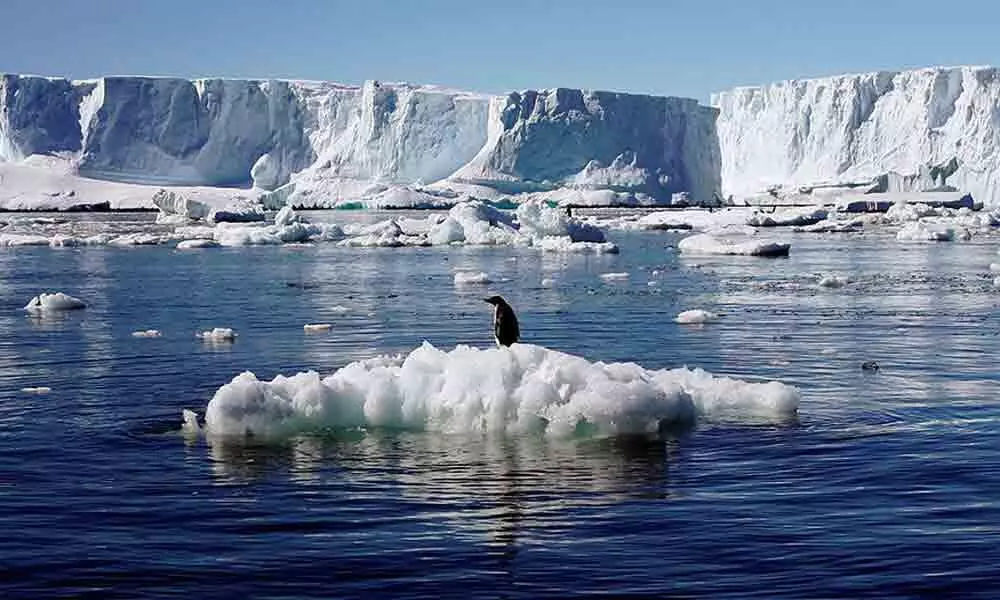Hidden lakes found in Antarctica as global warming melts ice sheet

Antarctica as global warming melts ice sheet
The Antarctic ice sheet, which appears calm and stable from above, is slowly losing its foundation and collapsing under its own weight as global warming and climate change raise temperatures on the poles.
The Antarctic ice sheet, which appears calm and stable from above, is slowly losing its foundation and collapsing under its own weight as global warming and climate change raise temperatures on the poles. The melting of water has created several lakes underneath the ice, which has formed a system of waterways eventually draining into the ocean.
In a bid to understand the changes occurring underneath the ice sheet, scientists trained the most advanced Earth-observing laser instruments flying in space and discovered two more active subglacial lakes. US-based space agency Nasa mapped hidden lake systems under the West Antarctic ice sheet.
The study published in Geophysical Research Letters states that Antarctica's water system contains more than 130 active lakes, and its evolution remains a major uncertainty in future ice sheet dynamics.
The Antarctic water system had remained a mystery but began to unravel in 2007, when Helen Amanda Fricker, a glaciologist at Scripps Institution of Oceanography, helped in the understanding of subglacial lakes in the region.
Scientists have now found an entire network of lakes connected with one another, filling and draining actively over time. "The discovery of these interconnected systems of lakes at the ice-bed interface that is moving water around, with all these impacts on glaciology, microbiology, and oceanography—that was a big discovery from the ICESat mission," said Matthew Siegfried, assistant professor of geophysics, the lead investigator in the new study.
The formation and functioning of subglacial lakes result from a combination of factors, including fluctuations in the pressure exerted by the massive weight of the ice above, the friction between the bed of the ice sheet and the rocks beneath, and heat coming up from the Earth below.
The understanding of this glacial plumbing system is important because freshwater might alter the speed of the ice sheet above or the circulation of the ocean into which it ultimately flows. The Antarctic ice sheet, a dome-shaped layer of ice covering most of the continent, "flows slowly outwards from the central region of the continent like super thick honey", according to Nasa.
"But, as the ice approaches the coast, its speed changes drastically, turning into river-like ice streams that funnel ice rapidly toward the ocean with speeds up to several meters per day," Nasa stated.
The movement leads to the melting of water due to increasing temperatures in the region and as the ice moves, it forms cracks, crevasses, and other imperfections. The continuous melting is set to increase sea levels across the world and tracking these complex processes will provide crucial insights into the fate of the ice sheet.














